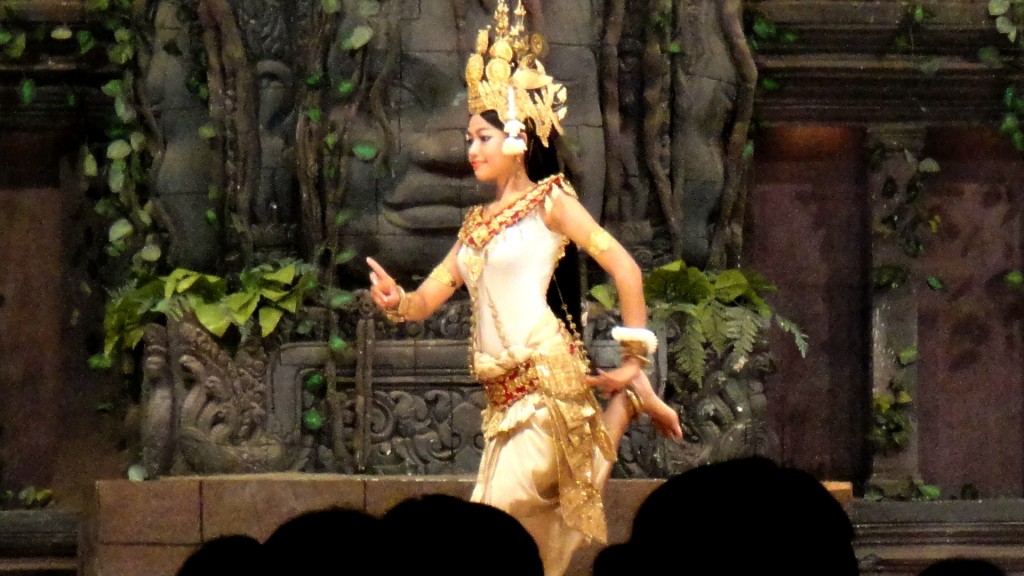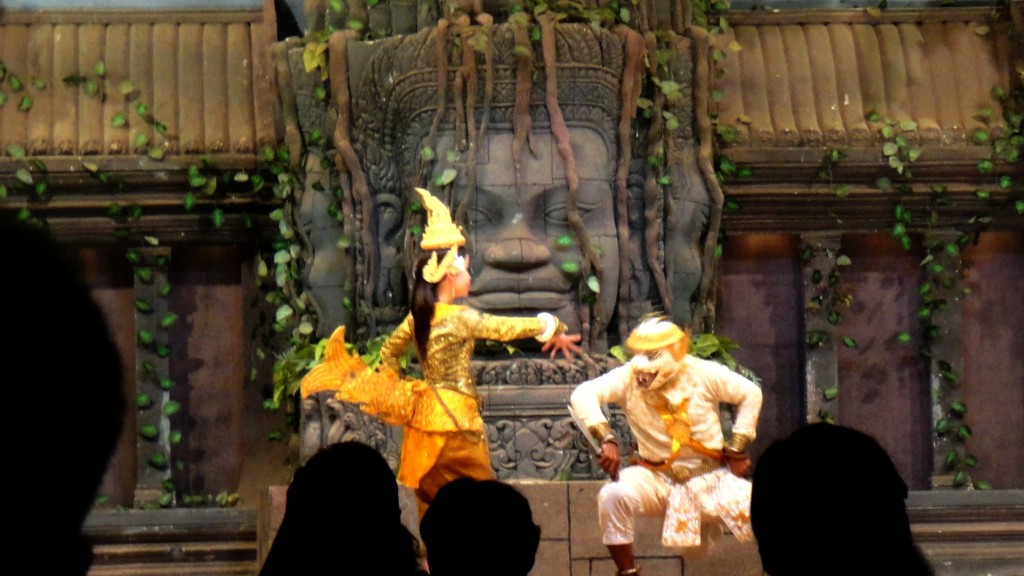If you want to experience a bit of Cambodian Culture, the Apsara Show is for you. Several hotels and restaurants are showcasing this part of their culture and I opted to watch it at The Koulen Restaurant. A tuktuk will bring you to their location on Sivatha Street, Siem Reap for USD 1.00 per way. Once you get there, you can take any table that suits your needs and of course prepare your cameras for the picture-taking. The buffet will start at 18:00 to 19:30 everyday. The show and the dinner cost you USD 12. The food is not so good for my taste buds though they are serving various international dishes. Anyway, it’s the show that I am after of.
An Apsara is a female spirit of clouds and water in mythology or referred to as a nymph. Apsaras are beautiful supernatural girls in heaven dancing to the music of the Gandharva, the celestial musician. This dance shows happiness and prosperity in Cambodia.
The Apsara dance is composed of numerous gestures which have special meanings and are a significant part of the story. There are 4500 basic gestures which a dancer has to master to perfect this dance.
The Khmer Apsara Dancers wear Sampot Sarabap, a silk type that is intricately pleated in the front. The headdress of the lead dancer has 5 tips while the remaining others have 3. This has garlands, artificial hairs and attractive embellishments. The red collar found below the neck is decorated with copper, which are gold in color. Dangling earrings, wrist jewelries and ankle gold jewelries are an addition to their costume.
Aside from the Apsara Dance, they also showcase the Sovann Maccha, the golden fish who fell in love with the White Monkey by the use of his clairvoyance. This actually portrays a love dance.
At the end of the show, all dancers lined up themselves on the stage and anyone in the audience can come up and take a photo with them. Given that I travel in solo, I am just capable of taking photos of them, not with them. 🙂
It’s good to get into the roots of the country, from it you will be able to understand a bit of their culture, appreciate their heritage and connect them to the real world.






























